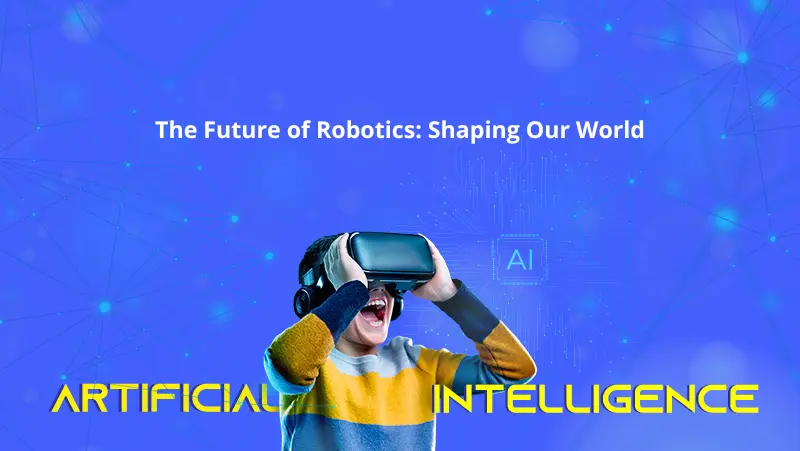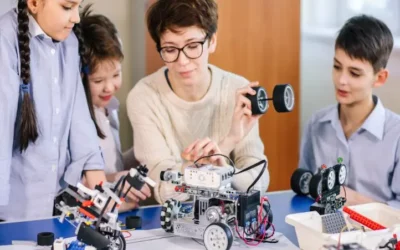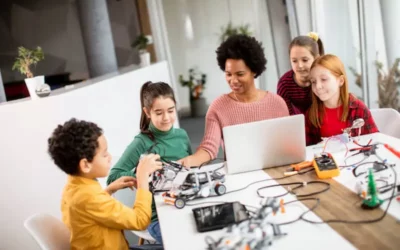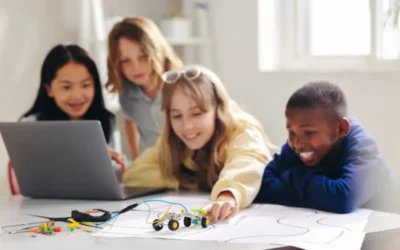“There are an endless number of things to discover about robotics.” A lot of it is just too fantastic for people to believe.” ~ Daniel H. Wilson
In recent years, robotics has become one of the most exciting and rapidly evolving fields in technology. From drones and self-driving cars to healthcare and manufacturing, robots are already transforming the way we live and work. But what does the future hold for robotics, and how will it shape our world?

In this blog, we will explore the latest advancements in robotics and their potential impact on society, from artificial intelligence and automation to space exploration and beyond. Join us as we delve into the fascinating world of robotics and explore the possibilities for the future.
Table of contents
What is Robotics?
Robotics or robots When we hear these terms for the first time, the only thing that comes to mind is a machine. A machine that works like a human?
Well, to understand the actual meaning, let me take you back to the technology world.
Robotics is the intersection of science, engineering, and technology that produces machines, called robots, that replicate or substitute for human actions. A robot is a programmable machine that can complete a task, while the term “robotics” describes the field of study focused on developing robots and automation. Each robot has a different level of autonomy. These levels range from human-controlled bots that carry out tasks to fully-autonomous bots that perform tasks without any external influences.
After reading that general introduction about robots, you might be fascinated by the robotics world. By watching movies, you might be thinking that there are only human-like robots. Well, let me clear it up.
some misconceptions. While robotics applications are expanded greatly like giving directions, welding metal in hazardous environments, and much more. Robots in today’s world can generally be grouped into six categories.
Categories Of Robots
Autonomous Mobile Robots (AMRs)

An autonomous mobile robot is a type of robot that can understand and move through its environment independently. AMRs use a set of sensors, artificial intelligence, machine learning, and computing for path planning to navigate through their environment. Since AMRs are equipped with cameras and sensors, if any obstacle happens such as a fallen box or a crowd of people then they use a technique a navigation technique like collision avoidance to slow, stop, or reroute their pat and then continue with their task.
Automated Guided Vehicles (AGVs)
While AMRs travel environments freely, AGVs are completely different. AGVs depend on tracks / predefined paths and often require operator oversight. These are used to deliver materials and move items in controlled environments such as storehouses and factory floors.
Articulated Robots

Articulated robots, which are also known as robotic arms, are meant to imitate the functions of a human arm. These robots are fast, reliable, and accurate, and they can be programmed to do an infinite number of tasks in a variety of environments. They can be used in factories for the execution of repetitive tasks, such as applying paint to equipment or parts; they can also be used in storehouses to pick, select, or sort goods to fulfill consumer orders, and many more.
Humanoids
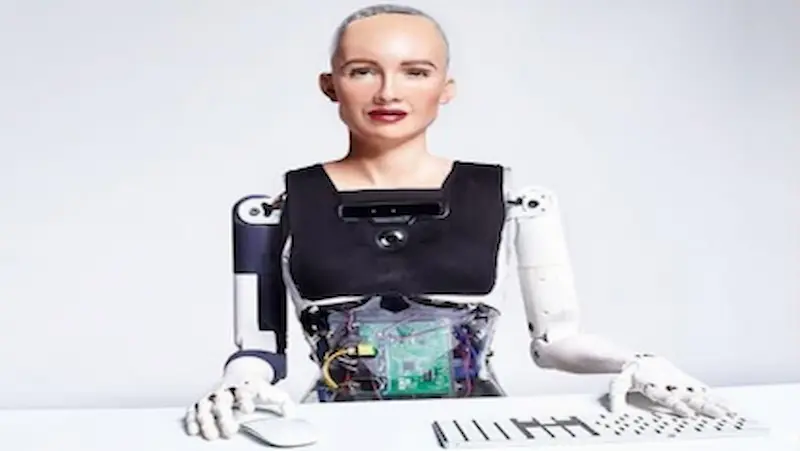
The term humanoids are used to identify robots that perform human-centric functions and often take human-like forms. They use many of the technology components that AMRs used to plan, act, and sense as they carry out tasks such as providing directions or offering services with personal business.
Cobots
Cobots or collaborative robots are robots intended for direct human-robot interaction within a shared space, and they are designed to function either alongside or directly with humans. While most other types of robots perform their tasks independently, or in isolated work areas, cobots have no such restrictions. Cobots can share spaces with workers to help them accomplish more. They’re often used to eliminate manual, or dangerous tasks from day-to-day workflows.
Hybrids
A hybrid robot or ” hybrot” is a cybernetic organism in the form of a robot controlled by a computer consisting of both electronic and biological elements. The various types of robots are often combined to create hybrid solutions that are capable of more complex tasks.
How Robotics Will Shape Our Lives?
After we got to know about the different categories or the types of robots that exist the question that arises here is how they will shape our lives.
Robots have the potential to transform many aspects of our lives, including the way we work, live, and interact with each other. Do you know that Robots can make ten times more goods and services than human labor? Which means it would increase the rate of production and the availability of everything to people. For example, if human labor can make ten glasses, a robot would make 100-200 glasses in its place, which would help a lot more people to have the benefit of using same. On the other hand, it would also reduce the manufacturing cost of the glasses and it would make the prices of the glasses cheaper. In effect, it would make those products available to people in large numbers. This is one of the examples of how robots are making human life easier. There are more than 1000 examples regarding the same.
What Are The Future Scopes Of Robotics?

Robots will increase economic growth and productivity in society and create new career opportunities for many people worldwide. The robotics industry worldwide keeps innovating, combining artificial intelligence and computer vision, other sensory technology, according to Analytics Insight magazine. Robots designed for industrial purposes are projected to be a $35.68 billion market by 2029, per Fortune Business Insights. The market for medical robots is anticipated to trail closely behind. And other areas of robotics, such as self-driving delivery robots, aerospace robotics, and hospitality robots, are poised to be billion-dollar sectors.
How To Get Started With Robotics?
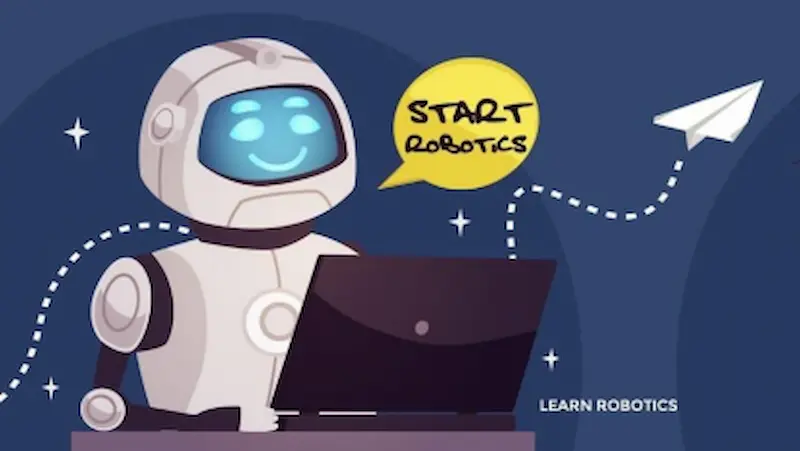
If you want to become part of the robot revolution or if you want to learn robotics, the best way to do so is to develop proficiency in computer science, coding, physics, and linear algebra. From there, you can take robotics classes, participate in clubs and competitions, and build on your basic robotics abilities to strengthen your skills over time. No matter your age or computer science abilities, anyone can learn this fun and fascinating skill. Also, do check out here about how you can get your kids started with robotics!
Know more about robotics for kids.
Conclusion
The future of robotics is incredibly exciting and can potentially transform our lives in countless ways. However, we must approach the integration and development of robots with a sense of responsibility and ethical considerations. Robots are made to help humans not to replace humans. And by doing so, we can ensure that robots are a force for good and help improve our lives in meaningful ways.
To get your hands on more educational and free resources on coding for kids, robotics for kids, financial education for kids, etc., do check out the BrightCHAMPS Page now!
Check-out the excellent curriculums and courses provided by BrightCHAMPS to get your kids started in robotics!
Frequently Asked Questions (FAQs)
An AMR robot (Autonomous Mobile Robot) is a robot that can move autonomously without physical elements for its location. It is commonly used in transport tasks in the areas of production and logistics.
The most punctual robots as we probably are aware were made e mind-19the 50s by George C. Devol, an innovator from Louisville, Kentucky. He imagined and licensed a reprogrammable controller called “Unimate”, from “Universal Automation”.
‘Robot’ was first applied as a term for artificial automata in the 1920 play R.U.R. by the Czech writer, Karel Čapek. However, Josef Čapek was named by his brother Karel as the true inventor of the term robot.

